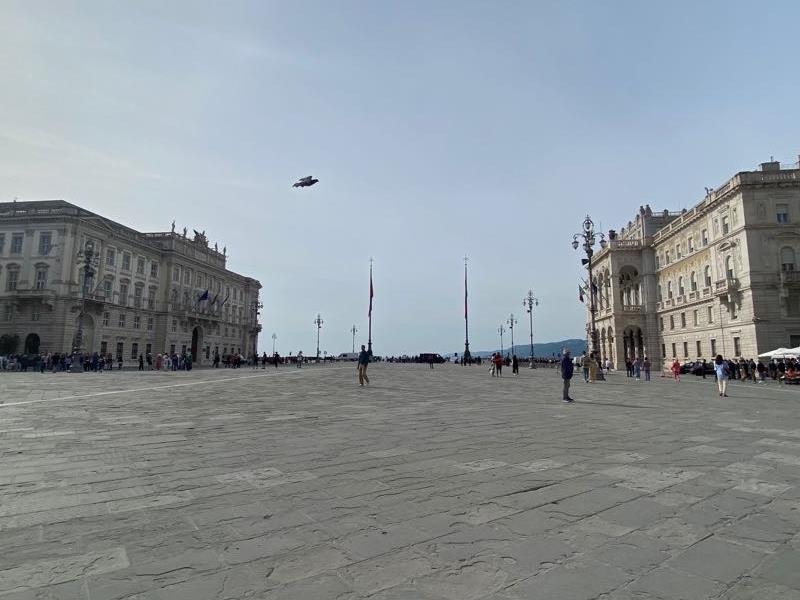COFFEE CULT
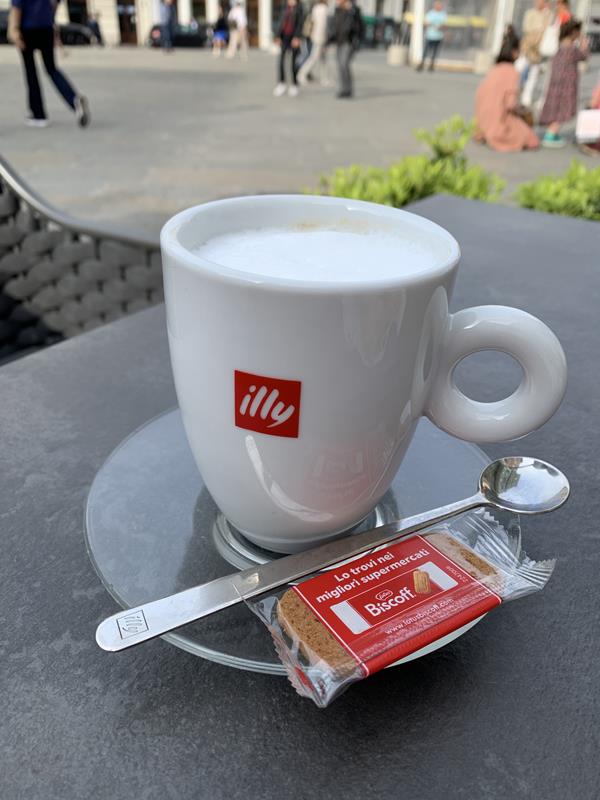
Trieste is a city known for coffee and its coffee culture is incredibly rich. The first café in Trieste was opened in the 18th century, and since then the coffee culture has flourished. Today, Trieste is famous for its excellent quality coffee and cafes, which are the so-called “heart” of the city’s social life.
Coffee in Trieste is loved mainly for several reasons:
- Tradition: The city has a long history with coffee, which has contributed to the development of a strong coffee culture.
- Quality: Trieste is famous for its high-quality coffee. Thanks to excellent climatic conditions and traditions related to roasting and brewing beans, coffee from Trieste is appreciated by consumers from all over the world.
- Atmosphere: Cafes in Trieste are not only about drinking coffee, but also a unique atmosphere that encourages you to quietly and slowly enjoy its taste and observe the lives of people passing by.
There are many traditional coffee roasteries in Trieste that are the pride of the city. The process of roasting and brewing beans is treated as an art, which translates into high quality coffee. The historic trade port is equally important – Trieste was once a very important trade port, which enabled the import of coffee from various parts of the world. In the past, cafes were meeting places for intellectuals, artists and city residents.
The most popular cafes in Trieste include:
- Caffè Tommaseo
Caffè San Marco
Caffè degli Specchi
A culinary and educational institution was also established in Trieste, which played a significant role in the promotion of coffee culture. Bazzara Academy is a place where coffee-making workshops, tastings and “lectures” of sorts are held, focusing on many aspects of coffee – from brewing the beans to the way of serving. The Academy is a meeting point for coffee lovers from Trieste and beyond.
Coffee in Trieste is not just a drink, but a journey through history, taste and unique atmosphere. Each cup of coffee served is a symbol of rich tradition, very good quality and an unforgettable atmosphere. When visiting Trieste, you cannot miss the opportunity to try real Italian coffee and experience the magic of its taste in this charming corner of the world
PORT OF TRIESTE
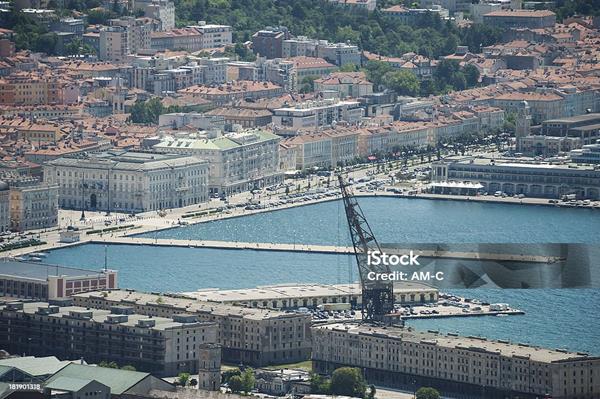
The port of Trieste is one of the largest seaports in Italy and also one of the largest ports in Europe. It is located in north-eastern Italy, on the Adriatic Sea.
It mainly handles sea transport of goods and passengers, but also container transport, crude oil, natural gas and other goods. It offers various types of cruises, including sightseeing cruises that provide views of the city’s historical monuments from the sea. One-day trips on tourist ships are also organized, during which you can admire beautiful seaside views. More experienced sailors can also go on a deep-sea cruise or a regatta cruise.
The port of Trieste is connected to the Grand Canal through a system of canals and waterways that allow the transport of goods and passengers between towns. The connection with the Grand Canal ensures the efficient functioning of trade and transport.
CANAL GRANDE
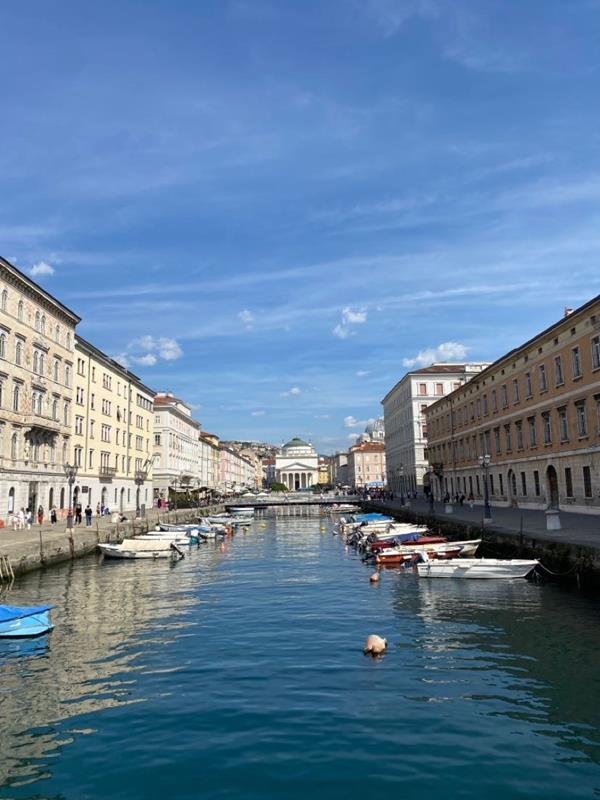
The Grand Canal in Trieste is one of the main canals in the city, with both historical and functional importance. It stretches through the city center, creating a picturesque waterway lined with beautiful buildings, cafes and restaurants.
This canal played an important role in trade and communication in the past, and today it is an important element of the urban landscape and a tourist attraction. – It was built in the 18th century on the initiative of Maria Theresa Habsburg and was intended to facilitate commercial transport, improve access to the port and increase the safety of navigation – The Grand Canal is a symbol of Trieste because it reflects the rich history and importance of the city as an important commercial and cultural port over the centuries. It is also an important element of this city, and its presence reminds us of its connection tobbb the sea and shipping.
An interesting fact is that the Grand Canal in Trieste is often compared to its more famous counterpart in Venice. Both of these places have similar names and serve similar functions as the main waterways in their cities. However, although Trieste’s Grand Canal is less known than its Venetian counterpart, it also has its own unique atmosphere and historical significance that attracts tourists and residents from all over the region.
S. Spiridione Ortodox Church
Orthodox Church of St. The Spiridion in Trieste is a characteristic example of Byzantine architecture, which is clearly visible in its form and details. It is located in the heart of the city, constituting an important part of the urban landscape.
The history of the church dates back to 1748, when the Orthodox community was founded. Thanks to the efforts of the Greek monk Damaskinos Omiros, it was possible to obtain the consent of Empress Maria Theresa to freely practise the Orthodox religion. The first church was built in the mid-18th century and served both local Serbs and Greeks. Disputes over church jurisdiction led to the dissolution of the community in 1781, and the Greeks left the church of St. Spiridion, building they own temple. In 1861, the construction of a second church began, which was completed in 1868 and is under the jurisdiction of the Serbian Orthodox Eparchy of Austria and Switzerland.
When it comes to dress code, the Orthodox Church usually has certain dress guidelines. Of course, you should dress appropriately for the sacred place and occasion. For men, it is recommended to wear long trousers and a shirt, avoiding shorts and tight shirts. For women, modest clothing is appropriate, with a long skirt or dress that covers the shoulders and knees.
It is worth visiting the Orthodox Church of St. Spiridion in Trieste due to its rich history, unique architecture and cultural importance for the Orthodox community. The interior of the church often delights with beautiful icons, frescoes and sculptures, creating an atmosphere of sanctity and beauty.
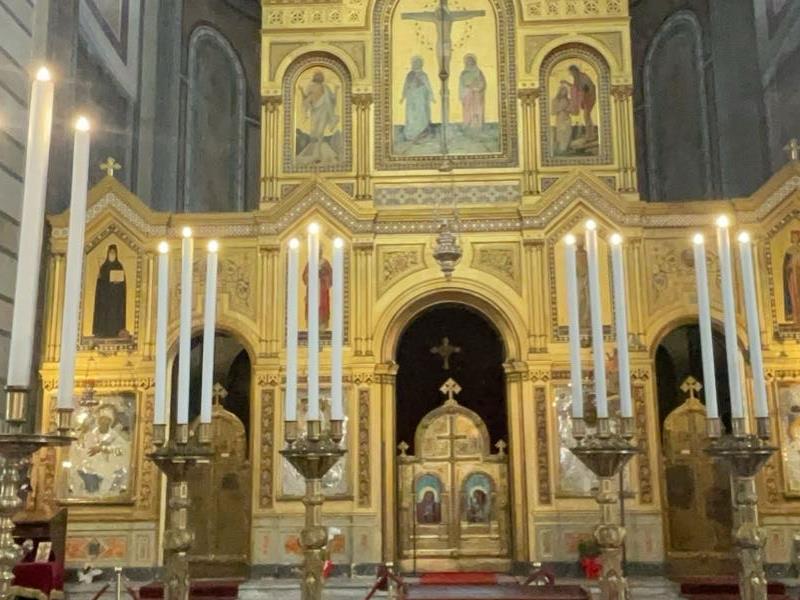
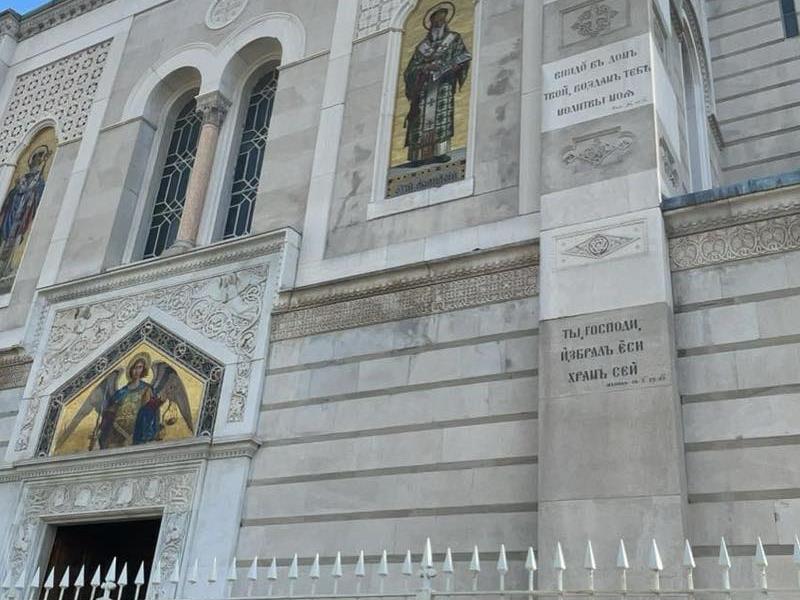
Piazza Unità d'Italia
The main square in Trieste is Piazza Unità d’Italia and is one of the largest waterfront squares in Europe. It is located on the very shore of the Adriatic Sea and it is a place where residents and tourists meet, walk and admire the beautiful architecture around. It is worth visiting at any time of the year, but it looks especially beautiful in spring and summer.
At the western end of the square there is an impressive town hall, built in neoclassical style. There is a fountain opposite the town hall.
On the northern and eastern sides of the square there are cafes, restaurants and shops that attract both tourists and residents. From the square we can see a beautiful view of the Adriatic Sea and the port.
At the southern end of the square there is the Arch of Triumph, which was originally built to celebrate the annexation of Trieste to Italy in 1918.
The entire surroundings of Unità d’Italia square are full of history and culture, making it an extraordinary place to explore and relax.
